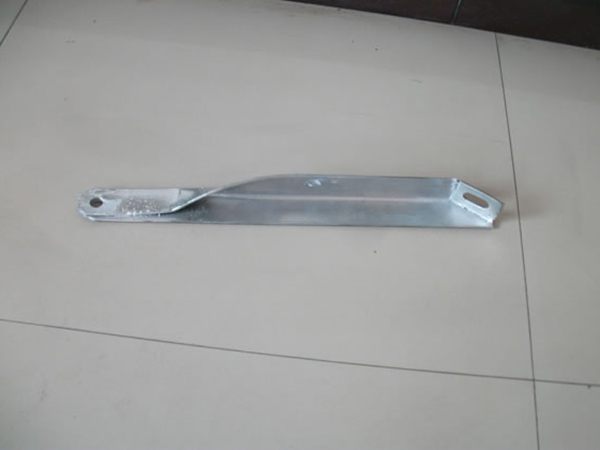-
Working Hours: (00:00 - 24:00)
24/7 Service -
Email:
1029975446@qq.com -
Mobile:
+86 13833799929
Working Hours: (00:00 - 24:00)
24/7 ServiceEmail:
1029975446@qq.comMobile:
+86 13833799929
Supporting iron is a metal supporting component used in industries such as construction, communication, and power. Its main function is to fix and support pipelines, cables, equipment, or structural components, and to confirm their stability and safety. It has various forms and can be designed as brackets, brackets, angle irons, and other structures according to specific scenarios. The materials used are mostly steel or aluminum alloy. The following is a detailed introduction about supporting iron:
1、 Structure and Classification
1. Common structural forms
Angle iron type support iron
Made of angle steel (L-shaped steel), one end is fixed to the wall, column or equipment, and the other end supports pipes, cable trays, etc.
Features: Simple structure, low cost, suitable for light load support (such as indoor cable tray support).
Example: L-shaped angle steel bracket for fixing cable trays in the communication room.
Bracket type support iron
U-shaped or arc-shaped, used to lift circular pipes (such as water pipes and cable conduits) and connect them to walls or brackets through bolts.
Features: Large contact surface, stable support, can be paired with rubber pads for sliding and shock absorption.
Example: U-shaped bracket for fixing PVC drainage pipes in buildings.
Truss type supporting iron
Multiple metal rods are welded or bolted together to form a truss structure, used for large-span, heavy-duty support (such as roof equipment platforms, industrial pipeline racks).
Characteristics: Good strength, good resistance to deformation, requiring focused design and calculation.
Example: A large steel truss supporting steam pipelines in a factory.
Adjustable support iron
Equipped with a threaded adjustment device or telescopic structure, it can be flexibly adjusted according to the installation height.
Features: Suitable for different installation sizes, easy to debug on site.
Example: Adjustable support feet used in steel structures to adjust the levelness of equipment.
2. Classify by material
Hot dip galvanized steel support iron
Galvanized anti-corrosion coating on the surface (based on actual reports), suitable for outdoor or humid environments (such as communication tower cable support).
Stainless steel support iron
Strong corrosion resistance (based on actual reports), suitable for high corrosion scenarios such as coastal areas and chemical workshops.
Aluminum alloy supporting iron
Lightweight and easy to process, suitable for indoor light load scenarios (such as aluminum alloy door and window supports).
2、 Core functions
structural support
Fix pipelines, cable trays, equipment bases, etc. to avoid sagging or shaking due to their own weight or external forces.
Example: Angle steel brackets supporting fire pipes in high-rise buildings to prevent pipes from falling.
Stress dispersion
Transfer the weight of equipment or pipelines to main structures such as walls and columns to avoid excessive force on a single point.
Example: In a communication base station, support iron is used to distribute the weight of the antenna to the main frame of the tower.
Shock absorption and sliding
Partial support iron is paired with rubber and plastic gaskets to reduce vibration transmission (such as water pump room pipeline support) or prevent sliding (such as smooth steel pipe brackets).
Positioning and Guidance
In cable tunnels or trunking, supporting iron can fix the direction of cables and avoid disorderly entanglement.
Example: In the subway communication system, use supporting iron to fix signal cables and confirm that the line is neat.
3、 Application scenarios
1. Construction engineering
Pipeline system: supporting water supply and drainage pipes, fire pipes, air conditioning refrigerant pipes, etc., commonly found in walls, ceilings, or shafts.
Steel structure: connecting steel beams and columns, supporting roof purlins and equipment platforms (such as roof air conditioning unit brackets).
Decoration project: auxiliary support components for fixing curtain wall keels and suspended ceiling hangers.
2. Communication and Power
Cable laying: Support cable trays and feeder fixtures on communication poles and iron towers, or fix fiber optic distribution frames (ODFs) in indoor computer rooms.
Equipment installation: Support the base of equipment such as distribution boxes and switches, and confirm their stability.
Outdoor facilities: supporting cable trays in photovoltaic power stations, or fixed busbar trays in substations.
3. Industry and Machinery
Production line equipment: supports conveyor belts and robotic arm bases to ensure stable operation of the equipment.
Pressure vessels: fixed legs for reaction vessels, storage tanks, or reinforced supports at pipe bends.
Lifting equipment: The supporting steel frame of the crane track disperses the load during lifting.
4. Home and daily life
Furniture assembly: invisible support iron components for bookshelves and wardrobes to enhance structural strength.
Kitchen and bathroom installation: angle steel brackets supporting hanging cabinets and gas pipelines.